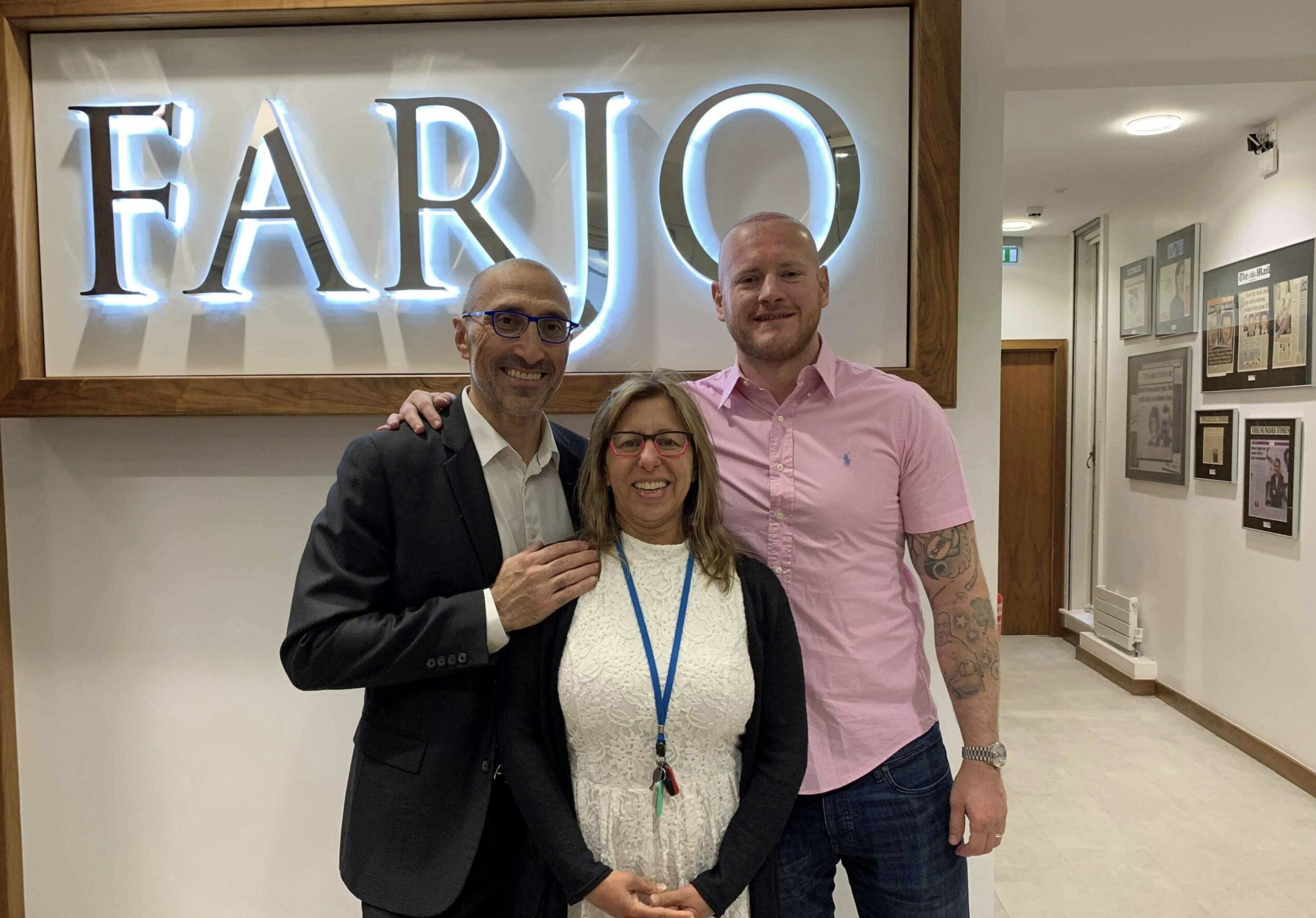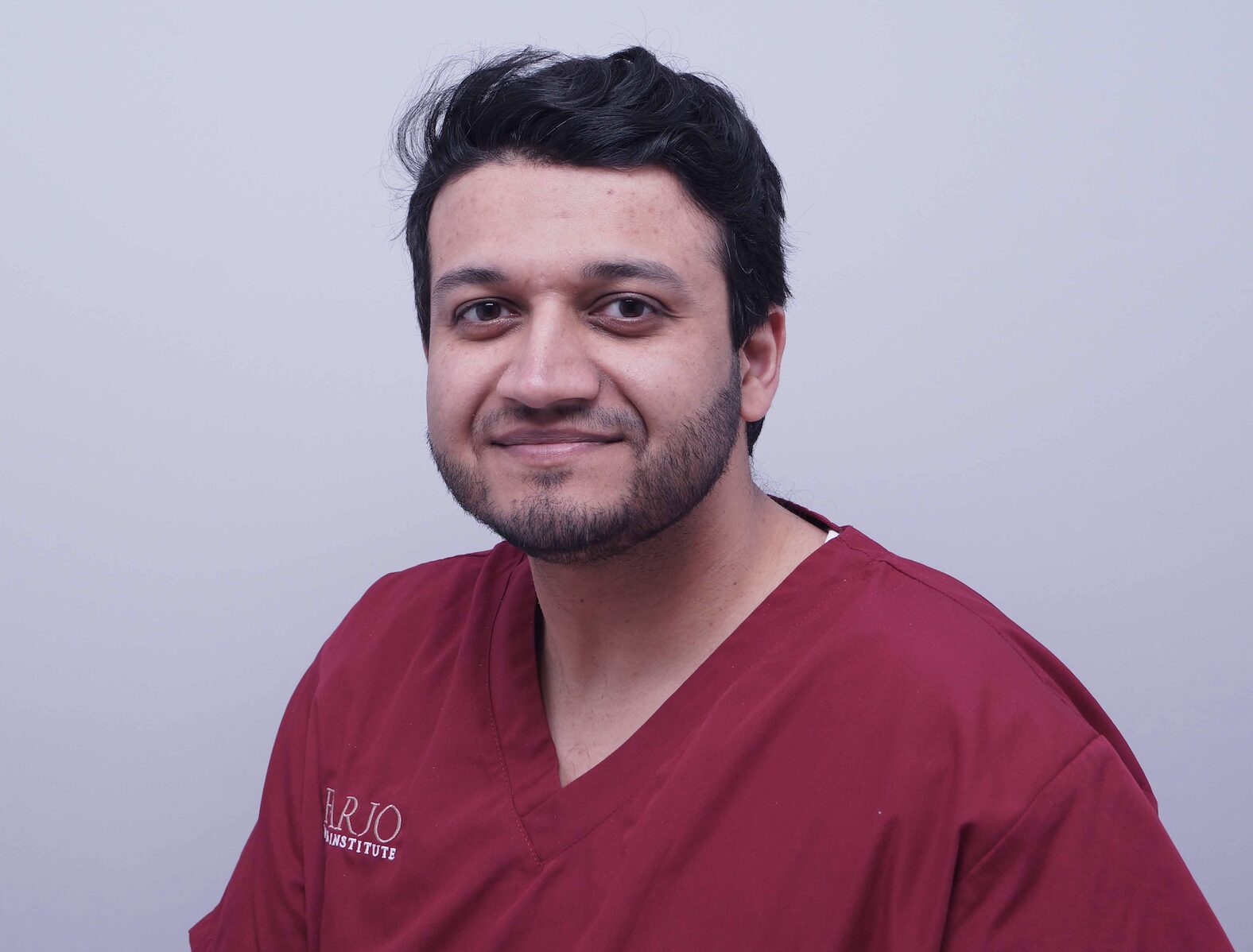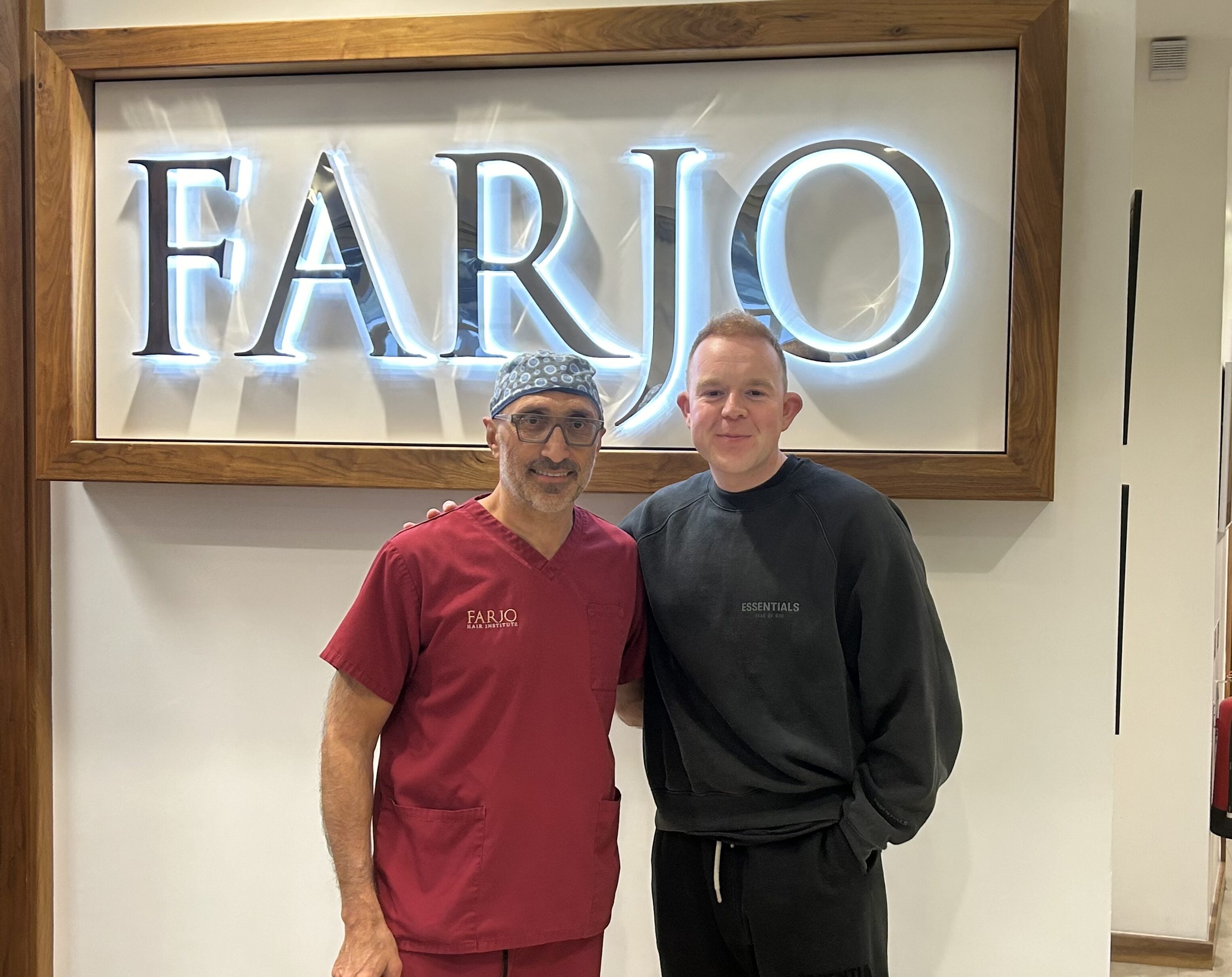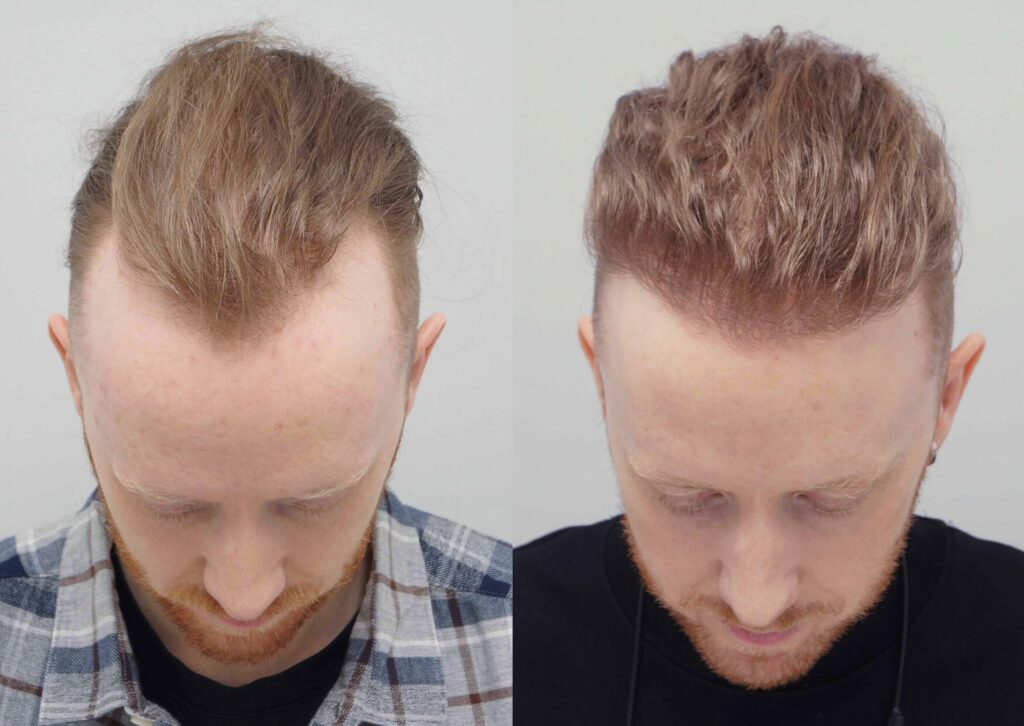
Everything You Need to Know About FUE Hair Transplants
12th May 2025
Your Complete Guide to FUE Hair Transplants in Manchester & London
Hair loss is a common concern for many individuals, affecting self-esteem and confidence. Among the various solutions available, Follicular Unit Excision (FUE) hair transplants have emerged as one of the leading methods for restoring hair. In this blog post, we’ll explore everything you need to know about FUE hair transplants, from the procedure and benefits, to costs and recovery. If you’re considering an FUE hair transplant in Manchester or FUE hair transplant in London, this guide will help you make an informed decision.
What is an FUE Hair Transplant?
Follicular Unit Excision (FUE) is a hair restoration technique that involves extracting individual hair follicle units from a donor area – typically the back or sides of the scalp – and implanting them into areas experiencing hair loss. Unlike the more traditional Strip Follicular Unit Transplantation (FUT) method, which removes a strip of scalp to obtain hair follicles by microscopic dissection, FUE offers a less invasive approach with quicker recovery times and minimal visible scarring.

“The vast majority of hair transplants we now perform are FUE, as it provides excellent results with minimal downtime. However, Strip FUT is still applicable in some cases, particularly where very large graft numbers are required.” – Dr Bessam Farjo, Co-Founder & Lead Hair Transplant Surgeon at the Farjo Hair Institute.
The FUE Procedure: Step-by-Step
If you are considering an FUE hair transplant, understanding the procedure can help ease any concerns. Here’s a step-by-step breakdown of what to expect if you have a FUE hair transplant with the Farjo Hair Institute:
- Consultation: A thorough consultation and assessment with a qualified and experienced member of the Farjo Hair Institute team to determine suitability and develop a personalised treatment plan. This may include non-surgical treatments such as certain prescription medications like finasteride or minoxidil to stabilise existing hair loss and rejuvenate thinning hairs.
- Preparation: On arrival at the clinic on the day of your surgery, the donor area is usually shaved to facilitate follicle extraction. Local anaesthetic will then be given, as well as any other relevant medication to relieve anxiety and facilitate good recovery.
- Extraction: Individual hair follicle units are carefully removed by one of our skilled surgeons, using surgical tools designed specifically for this process. These follicles are then sorted and assessed by our hair transplant technician team and prepared for implantation.
- Recipient Site Making:Your hair transplant doctor will make all the sites that will receive the hair follicles using tiny needles or blades. This step determines the aesthetic outcome controlling hairline design, hair distribution, direction, angles and orientation
- Implantation: The extracted follicles are meticulously implanted by our technical team into the recipient area, which will have been carefully mapped out by your surgeon, ensuring natural growth outcome.
- Recovery: Post-procedure care instructions will be provided to promote healing and optimal results. If you have any questions at all during your recovery, the Farjo Hair Institute team will be on hand to assist.
- Follow Up: Once you’ve completed your recovery and the new hair has had a chance to grow in and mature, you’ll be invited for a follow up appointment with your surgeon (usually 8 months after surgery) to discuss your results and compare with your before photos, as well as discuss your hair growth plan moving forward.
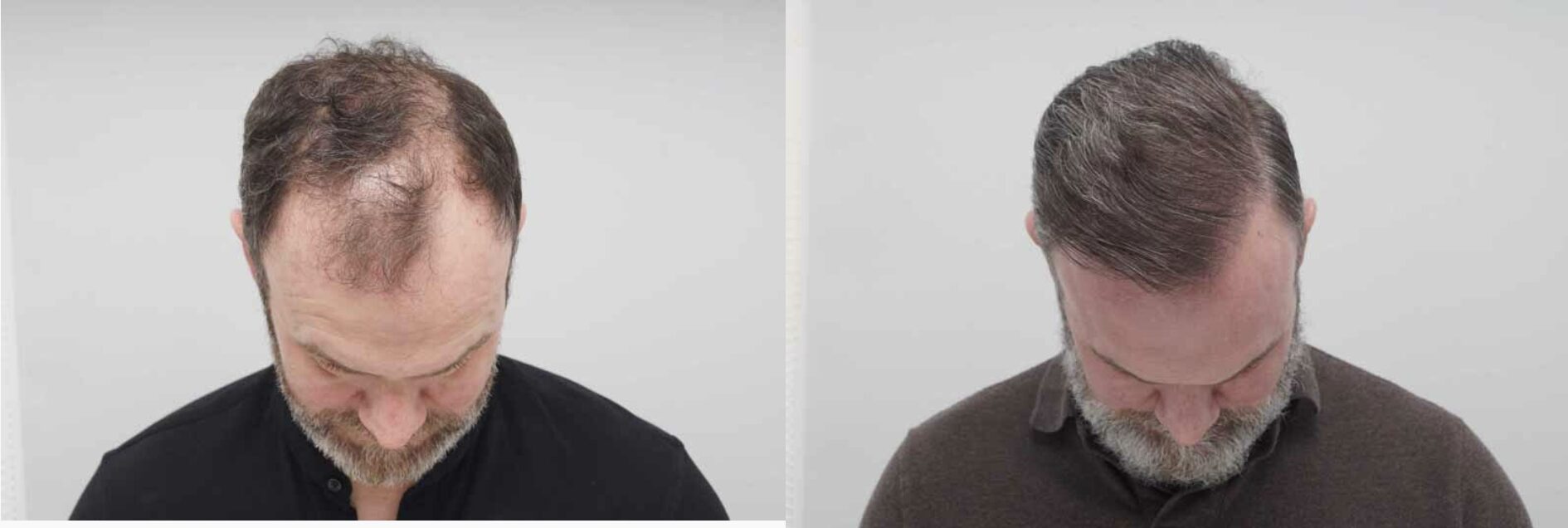
Benefits of FUE Hair Transplants
Many people opt for an FUE hair transplant due to the numerous advantages it offers, including:
- Minimally Invasive – There are no stitches or large incisions, which often results in a quicker and minimal discomfort recovery.
- Natural Appearance – Although this is not exclusive to FUE, the precise placement of individual follicles, when done by a highly qualified and experienced surgeon, ensures a natural-looking hairline.
- Minimal Scarring – Tiny, dot-like scars that are virtually undetectable, allowing for shorter hairstyles while your newly transplanted hair grows in.
- Versatility – Suitable not only for restoring hair on the scalp, but FUE techniques can also be used for eyebrow and beard transplants.
- Faster Healing – Recovery time is significantly shorter compared to the FUT method.
- Long-Lasting Results – Not necessarily particular to FUE, but the transplanted hair is for the long term, Maintenance medications may be recommended and further surgery may be needed especially if hair loss occurs in other areas of the scalp later down the line.
FUE Hair Transplant Costs in the UK
One of the most common questions we have during consultations about FUE hair transplants is the cost. Prices vary based on several factors, such as the number of grafts required, the clinic’s quality and location, and the surgical team’ qualification, expertise and experience. In the UK, prices typically range from £3,000 to £15,000.
At the Farjo Hair Institute, procedures start from £3,000 for 500 grafts and can go up to £15,000 for 4,000 grafts. The number of grafts required depends on the size of the area to be covered and the level of density targeted.
Choosing the Right Clinic: Manchester and London
When considering an FUE hair transplant in Manchester or an FUE hair transplant in London, selecting a vastly- experienced, reputable and ethical clinic is essential. Farjo Hair Institute, led by renowned and multi-award winning surgeons Dr Bessam Farjo and Dr Nilofer Farjo, offers state-of-the-art facilities and expertise in both locations. Our other doctors are Dr Greg Williams, Dr Rachael Kay and Dr Zayn Sattar. As of 2025, all five boast a combined hair transplant experience of a staggering 96 years!

Factors Influencing FUE Hair Transplant Costs
Several factors can impact the overall cost of an FUE hair transplant, including:
- Number of Grafts – Larger areas of hair loss require more grafts, increasing the cost.
- Surgeon’s Experience – Highly skilled and experienced surgeons with a proven track record will charge higher fees.
- Clinic Location – Prices may be higher in major cities like London due to operational costs.
- Technology & Techniques – Advanced tools and techniques may influence pricing.
- Aftercare & Follow-Ups – Some clinics include several post-procedure check-ups in the price.
Recovery and Aftercare
Following an FUE hair transplant, the recovery process is relatively quick. Small scabs will form in both the donor and recipient areas, usually healing within 7 days in the donor area and around 14 days in the recipient area. To ensure the best results, patients are advised to avoid strenuous activity for at least one week and to sleep with their head elevated above the chest for the three nights to reduce swelling. Following the aftercare instructions provided by the surgical team is essential for proper healing. Most results typically become visible within 6 to 12 months as the transplanted hair grows naturally.
Understanding Hair Loss
Male pattern baldness is the leading cause of hair loss among men. Genetics play a significant role, and certain lifestyle factors can also accelerate hair thinning. A recent Men’s Health article that featured quotes from Dr Bessam Farjo explores why men go bald and the psychological impact it can have.
Frequently Asked Questions (FAQs)
Q: How long does it take to see results after an FUE hair transplant?
A: Initial hair growth may be visible within three to four months, with significant results apparent after six to twelve months and sometimes longer.
Q: Are FUE hair transplants permanent?
A: Nothing in life is necessarily permanent, but transplanted hair follicles are typically resistant to the hormones that cause hair loss, meaning the results are very long-lasting.
Q: Is the FUE procedure painful?
A: The procedure is performed under local anaesthesia, minimising discomfort once it is applied. The anaesthetic injections themselves can be painful but only for around 5 minutes or so at the beginning. Some patients may experience mild soreness post-procedure, which usually subsides within a few days.
If you’re considering an FUE hair transplant in Manchester or FUE hair transplant in London, understanding the procedure, costs, and recovery process is essential. By choosing a reputable clinic like Farjo Hair Institute, you can achieve natural and long-lasting results. Book a consultation today to take the first step towards restoring your hair and confidence.
